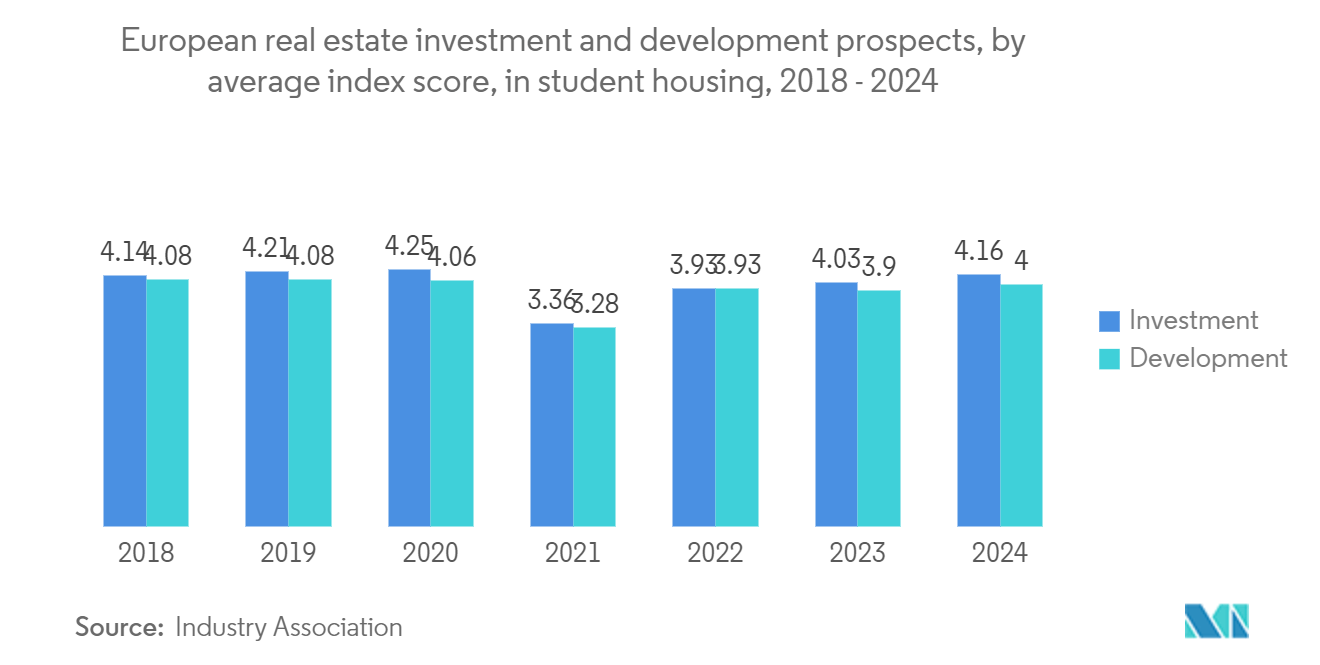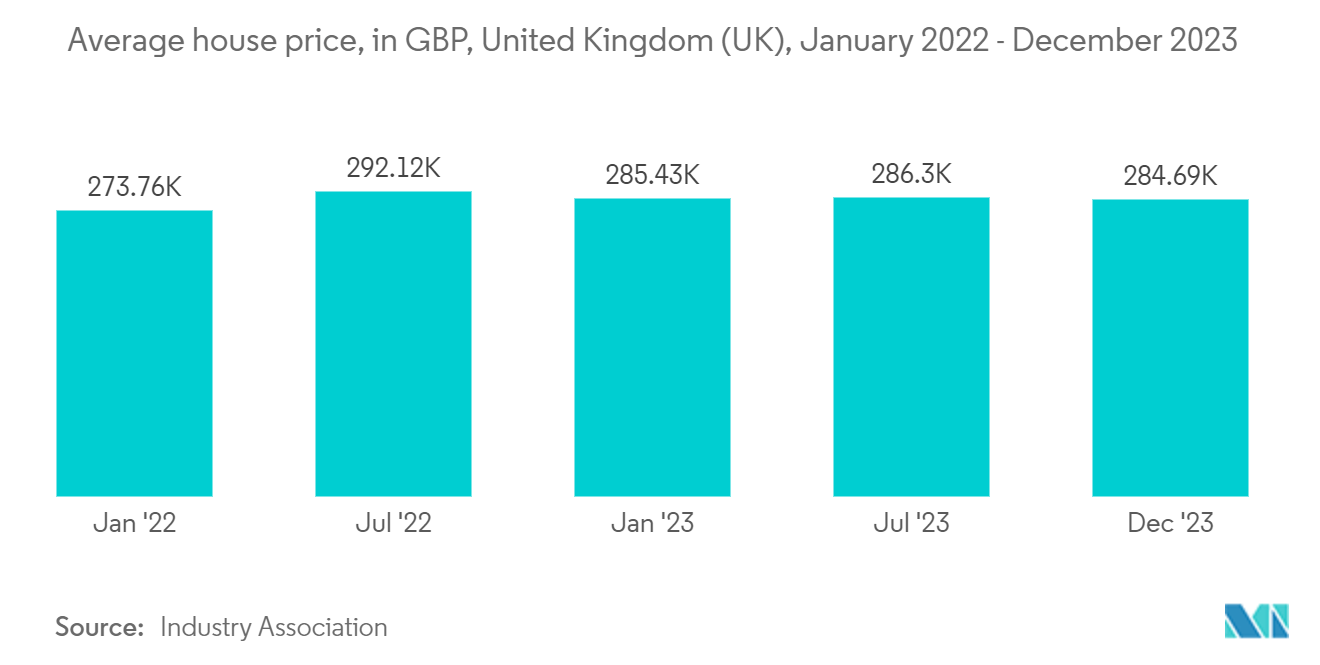Market Trends of Europe Residential Real Estate Industry
Student Housing to Gain Traction
- The demand for student housing in Europe is set to continue to grow, driven by the increasing number of international students. In addition, the aging population is also putting pressure. As a result, occupier fundamentals in all subsectors are expected to remain strong, underpinning rental growth in 2024.
- With a student population of 1.2 million, Poland is the 6th largest potential market in Europe for student accommodation operators, second only to Spain and Italy. The market potential for student accommodation operators in Poland is 2 to 3 times that of the Netherlands.
- There is an unmet demand of 200 to 400 thousand beds for student housing in Poland, driven mainly by domestic mobile students who move to other cities to study, as well as the growing number of international students. The student housing market is still in its early stages in Poland, providing investors with attractive opportunities for yield and capital value growth.
- On the other hand, rental rates for operational projects within Poland’s student accommodation sector have increased by 30% to 60% over the last three years, depending on the city and the asset. Warsaw saw a 50% increase in rental rates. In the city of Skopje, rents increased by around 30%. In the city of Tri-City, rents increased by 50%. In Wrocław, rents increased by 30-50%, and in the city of Krakow, rents increased by 40-60%. It is clear that the new supply cannot keep up with the increasing demand.

United Kingdom Holds a Prominent Position in the Market
- The living sector is benefitting from structural and demographic tailwinds, which means that sentiment toward the sector remains strong despite broader macroeconomic headwinds. Occupational demand in the private rented sector and the demand for purpose-built student accommodation in the face of an acute supply shortage have contributed to strong rental-value growth across all subsectors. This rental growth, in combination with more flexible asset pricing, has attracted investors into the sector.
- Year-on-year transaction volumes have fallen significantly. This is largely due to asset holders remaining reluctant sellers rather than a general softening in investor appetite toward the sector. An estimated 82,940 sales were completed in February 2024, which was 1.2% more than the sales recorded in January. This was the second consecutive monthly increase. However, sales still remain 5.6% below the same time last year and 15.5% below pre-pandemic levels.
- Investors are continuing to focus on well-positioned, high-quality schemes with robust environmental, social, and governance credentials – all key factors in attracting tenants. Student accommodation schemes affiliated with world-class universities are expected to remain at the top of investors' priorities.
- The living sector is expected to continue to deliver positive results, supported by an increase in rental values, albeit at more normalized levels, as affordability concerns constrain investors’ capacity to drive up rental values. Increased investor attention to the long-term cost-effectiveness of schemes is critical to underpinning asset-income profiles with certainty and stability.


